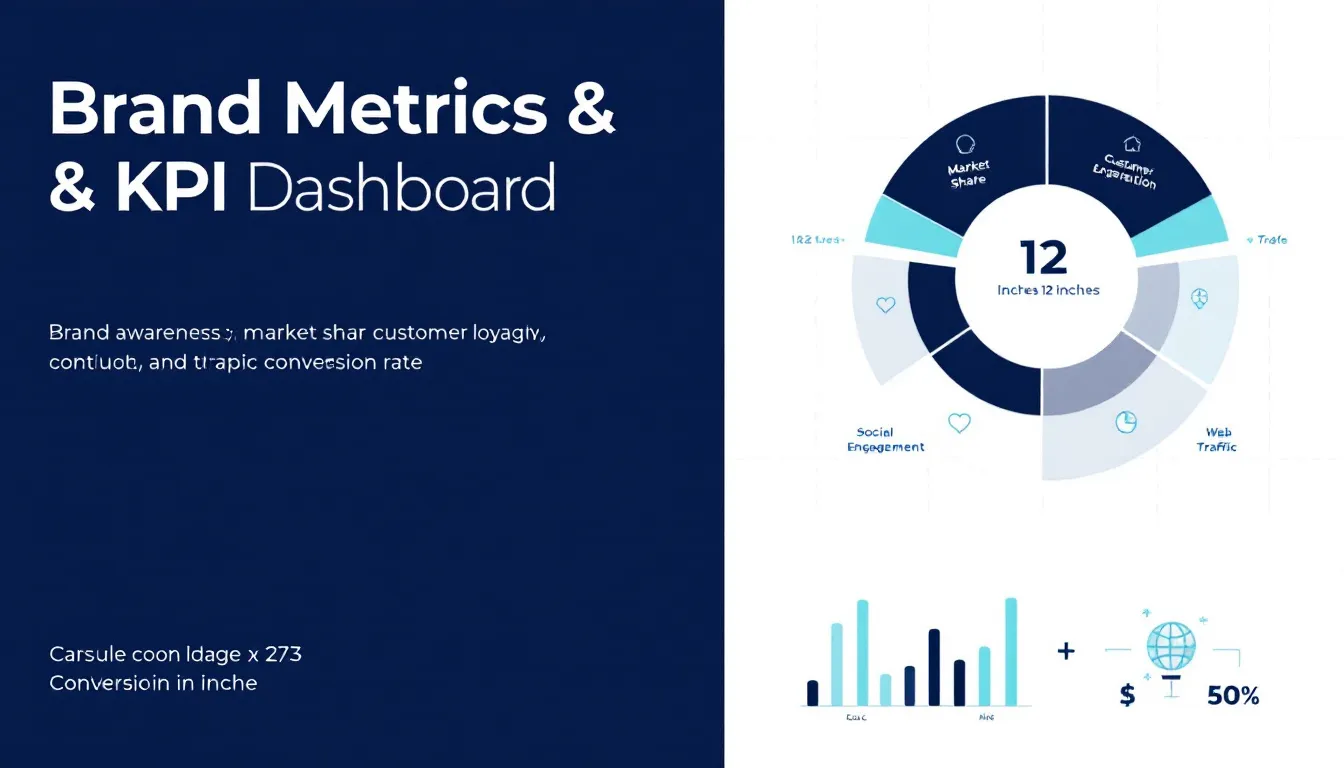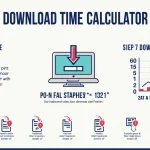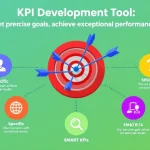Is this tool helpful?
How to Use the Brand Metrics and KPI Analysis Tool Effectively
This comprehensive brand performance tracking tool helps businesses identify and analyze key metrics for measuring brand success. Here’s a step-by-step guide to using the tool effectively:
- Brand Name Entry: Input your brand name in the first field. For example: “Spotify” or “Under Armour”
- Industry Selection: Specify your industry sector, such as “Digital Entertainment” or “Sports Equipment”
- Target Audience Description: Detail your audience demographics and characteristics
- Business Objectives: List your primary goals (optional)
- Marketing Channels: Specify your brand promotion channels (optional)
Understanding Brand Metrics and KPI Analysis
Brand metrics and Key Performance Indicators (KPIs) are essential measurements that help organizations track and evaluate the effectiveness of their brand strategy. These metrics provide valuable insights into brand health, customer perception, and market position.
Core Components of Brand Performance Measurement
- Brand Awareness Metrics
- Customer Engagement Indicators
- Market Share Analysis
- Brand Sentiment Measurements
- Customer Loyalty Metrics
Benefits of Using the Brand Metrics Analysis Tool
1. Strategic Decision Making
The tool enables data-driven decision-making by providing comprehensive insights into:
- Brand performance trends
- Customer behavior patterns
- Market positioning effectiveness
- Campaign impact assessment
2. Resource Optimization
By identifying key performance areas, organizations can:
- Allocate marketing budgets more effectively
- Focus efforts on high-impact activities
- Eliminate underperforming initiatives
3. Competitive Advantage
Regular tracking of brand metrics helps maintain competitive edge through:
- Market trend identification
- Competitor benchmarking
- Innovation opportunity spotting
Solving Business Challenges Through Metric Analysis
Brand Awareness Measurement
The tool helps track various awareness metrics:
$$ \text{Brand Awareness Score} = \frac{\text{Number of Target Customers Aware of Brand}}{\text{Total Target Market Size}} \times 100 $$Customer Engagement Analysis
Engagement metrics calculation:
$$ \text{Engagement Rate} = \frac{\text{Total Engagement Actions}}{\text{Total Reach}} \times 100 $$Brand Loyalty Assessment
Customer loyalty measurement:
$$ \text{Customer Loyalty Index} = \frac{\text{Repeat Customers}}{\text{Total Customers}} \times 100 $$Practical Applications and Use Cases
Case Study 1: Retail Brand Evolution
A retail clothing brand used the tool to track:
- Social media engagement: 25% increase in interactions
- Customer satisfaction: 15% improvement in ratings
- Brand recall: 30% increase in awareness
Case Study 2: Tech Startup Growth
A SaaS company utilized the tool for:
- Market penetration analysis
- Customer acquisition tracking
- Brand value assessment
Frequently Asked Questions
What are the most important brand metrics to track?
Key metrics include brand awareness, customer engagement, market share, customer satisfaction, and brand loyalty. The importance of each metric varies based on industry and business objectives.
How often should I analyze brand metrics?
Regular monitoring is recommended, typically monthly for operational metrics and quarterly for strategic metrics. This frequency allows for timely adjustments to brand strategy.
Can I customize metrics based on my industry?
Yes, the tool allows for industry-specific customization to ensure relevant metric tracking aligned with your sector’s unique characteristics.
How do I interpret the results?
Results should be analyzed in context with your industry benchmarks, historical performance, and specific business goals. The tool provides detailed insights for each metric category.
What actions should I take based on the metrics?
Use insights to adjust marketing strategies, improve customer experience, enhance product offerings, and optimize resource allocation based on performance indicators.
Advanced Usage Tips
Integration with Marketing Strategy
Align brand metrics with:
- Marketing campaign objectives
- Content strategy goals
- Customer journey mapping
- Sales funnel optimization
Trend Analysis and Forecasting
Utilize historical data to:
- Predict future brand performance
- Identify seasonal patterns
- Plan proactive strategy adjustments
Competitive Benchmarking
Compare brand performance against:
- Industry leaders
- Direct competitors
- Market averages
Best Practices for Brand Metric Analysis
Data Collection Standards
- Maintain consistent measurement periods
- Use standardized data collection methods
- Ensure cross-channel tracking alignment
Reporting and Documentation
- Create regular performance reports
- Document methodology changes
- Track historical trends
Strategic Implementation
- Set realistic performance targets
- Develop action plans based on insights
- Monitor implementation effectiveness
Important Disclaimer
The calculations, results, and content provided by our tools are not guaranteed to be accurate, complete, or reliable. Users are responsible for verifying and interpreting the results. Our content and tools may contain errors, biases, or inconsistencies. We reserve the right to save inputs and outputs from our tools for the purposes of error debugging, bias identification, and performance improvement. External companies providing AI models used in our tools may also save and process data in accordance with their own policies. By using our tools, you consent to this data collection and processing. We reserve the right to limit the usage of our tools based on current usability factors. By using our tools, you acknowledge that you have read, understood, and agreed to this disclaimer. You accept the inherent risks and limitations associated with the use of our tools and services.







